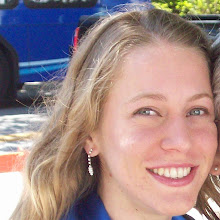The Allies knew that securing a harbor along France's northern border in the English Channel was essential for equipping soldiers with supplies. The problem was the Germans understood this. They heavily enforced all the ports and attempts at liberating any of them h
 ad been a failure.
ad been a failure.Winston Churchill decided they should make their own. In 1943, 30,000 men worked in Great Britain on pieces of the port. In Normandy, 15 old ships were sunk onto the sea bed to form a foundation. Then 7,000 tons of concrete breakwaters were drug across the English Channel and installed to keep waves from pounding the piers. Within 12 days, the experiment was nearly complete.
Then a gale errupted and attacked the ports for three days. The British Port Arromanches, coded Marbury B, was damaged, but still operable. A second American port, Marbury A, was destroyed because it had not been secured well. This may be why this engineering feat is ignored in our history books.
We were able to make out many of the large breakwaters lining the horizon. Then we visited Omaha Beach, the American cemetery, and Pointe du Hoc where the lunar landscape gives witness to Ally bombings. During the war, American soldiers were given temporary burials. Then two-thirds of families requested their loved ones' bodies to be returned. The remaining 9, 387 soldiers were buried in an American cemetery with white crosses facing west towards the USA.

That night I ate a delicious French dinner of chicken in heavenly cream with mushrooms, tasty mashed potatoes, an onion dish we never identified, and, of course, French bread. Then I had my first crème
brûlée, which is a sweet cream like pudding topped with a bitter layer of hardened sugar.
Yesterday we spent the morning at a museum in Caen. It's supposed to be a peace memorial, but its focus is on war. We walked through exhibits on WWII, the Cold War, Nobel Peace Prizes, and children of the Shoah. Shoah is the term the French use for Holocaust.

We climbed up Mont-Saint-Michel and explored the Abbey the dominates it in the afternoon. The beach and prairie landscape is disrupted by a little mountain, which is surrounded by sand at low tide and sea at high tide. The Abbey honors Saint Michael and has lasted centuries of construction and reconstruction.
Woosh! A month has already passed. The longer I stay in France, the more I love it. My group is bonding well. I returned last night to my own room for the first time. This is a long story, but my own space is refreshing.
French Fact: The tides in France are not like those I'm used to in Florida. The sea easily retreats 30 feet during low tide. Special floating docks at the Ally's port had to adapt to this, and when we visited Mont-Saint-Michel, we couldn't see the shore line.

Another awesome post. Really enjoyed the info on Arromanches, as I had never heard about that either.
ReplyDeleteI enjoy reading the history. What a beautiful beach and to think of all the blood shed there.
ReplyDelete